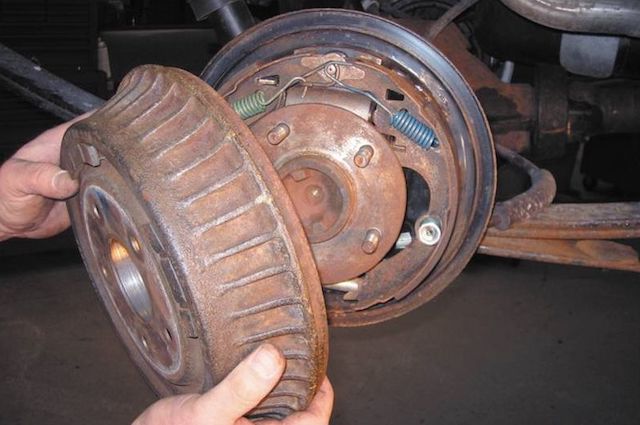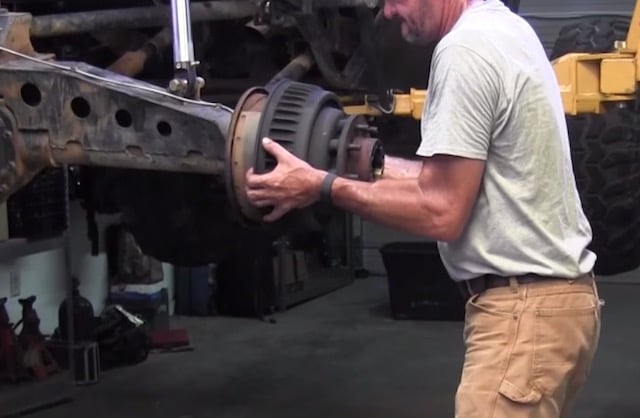
Disc brakes are much more common today than drum brakes. As a result, most people are unfamiliar with how drum brakes work or when to replace them. The good news is brake drums are built to last 100K to 150K miles and are easy to maintain. However, the parts inside the drum need to be inspected and serviced more frequently. This tutorial will show you how brake drums work and when to service them.
How Brake Drums Work

Brake drums use the same hydraulic principles as disc brakes. But instead of a brake caliper squeezing a brake disc, the hydraulic fluid pushes pistons out of a wheel cylinder. The pistons press the brake pads against the inside of the brake drum. These pads are called brake shoes, and they function the same way as dragging your feet to stop a bicycle, only with a lot more stopping force.
How to Tell If Your Drum Brakes Need to Be Serviced
When brake drums and brake shoes wear, they get thinner. Eventually, they wear out and require maintenance. Wheel cylinders also wear out and start to leak. Either one of these issues can cause the following problems:
- The back of the car shakes or pulls to one side when applying the brakes
- The brake pedal vibrates or feels soft
- The parking brake feels loose or doesn’t hold the car in place
- The brakes grind or squeal when applied
If you notice any of these signs, it’s time to service the brakes.
How to Service Drum Brakes

Servicing your drum brakes is something anyone can do. The process is slightly different than with disc brakes but not harder. We put together this helpful guide explaining how to change drum brakes, which includes many of the steps for inspection.
First, when inspecting drum brakes, look at the brake drums and brake shoes. Make sure the drums are smooth, and the brake shoes are evenly worn and not too thin. If either the drums or brake shoes are pitted or have deep grooves, you need to service them.
Next, check the wheel cylinders. If either the wheel cylinders or pistons look wet, it’s a sign they are leaking and need to be replaced. After checking for leaks, give the brakes a good cleaning with brake cleaner. Finally, look at the other brake hardware. You’ll see two springs at the top of the brake assembly connected to the brake shoes. At the bottom of the brake assembly is the self-adjusting mechanism for the brakes. Make sure these parts are not overly rusted or broken.
Don’t hesitate to call our free brake concierge team if you have questions. We offer a wide selection of brake drums and shoes that come with our best price-match guarantee and fast shipping. From Raybestos to Dynamic Friction, BuyBrakes.com is the best place to buy brake drums and shoes online.



